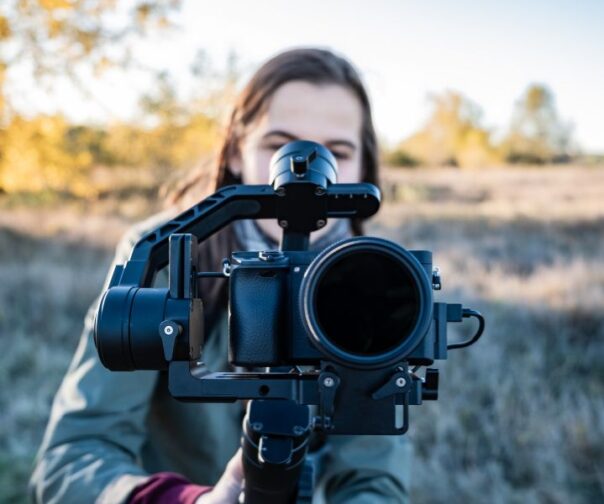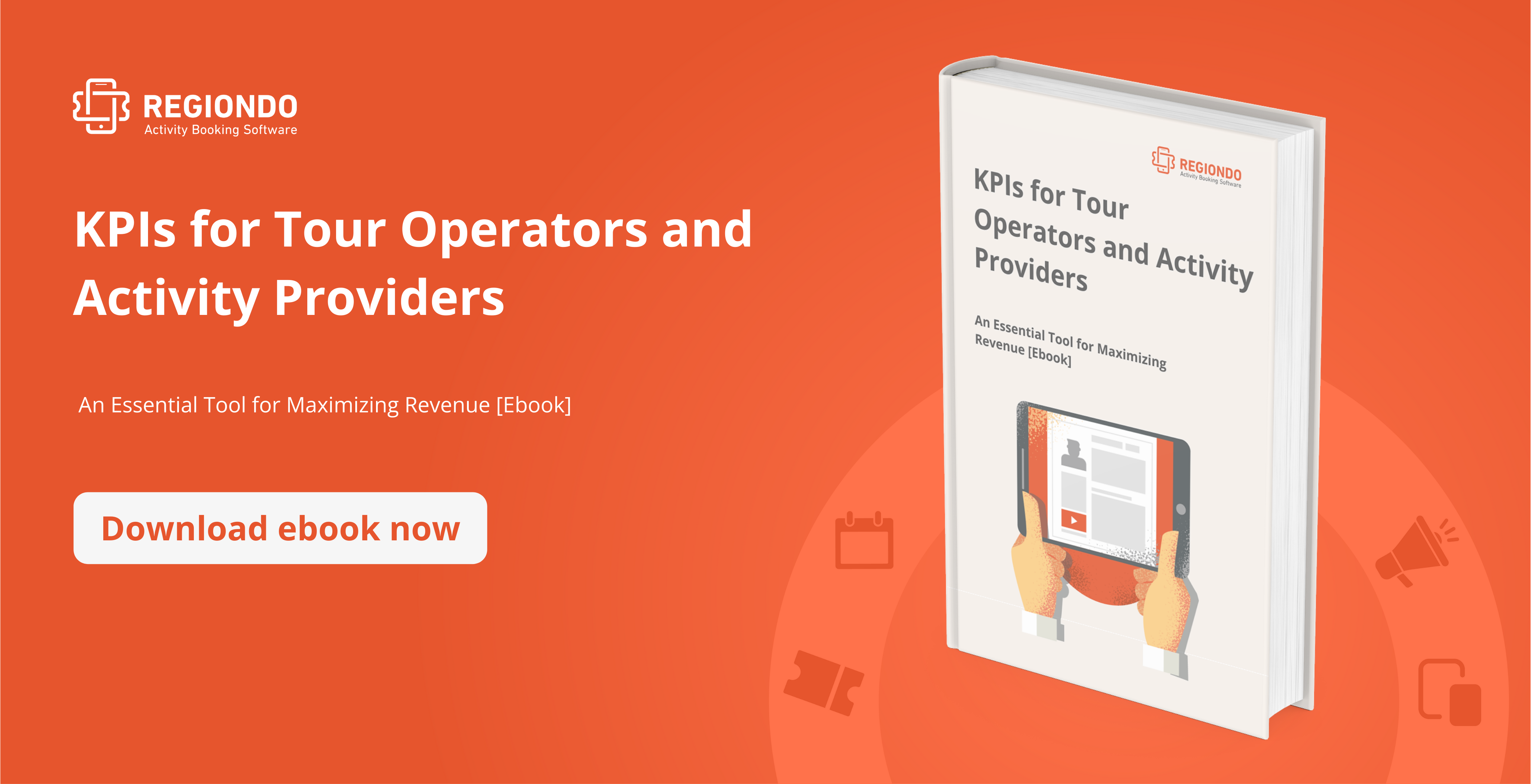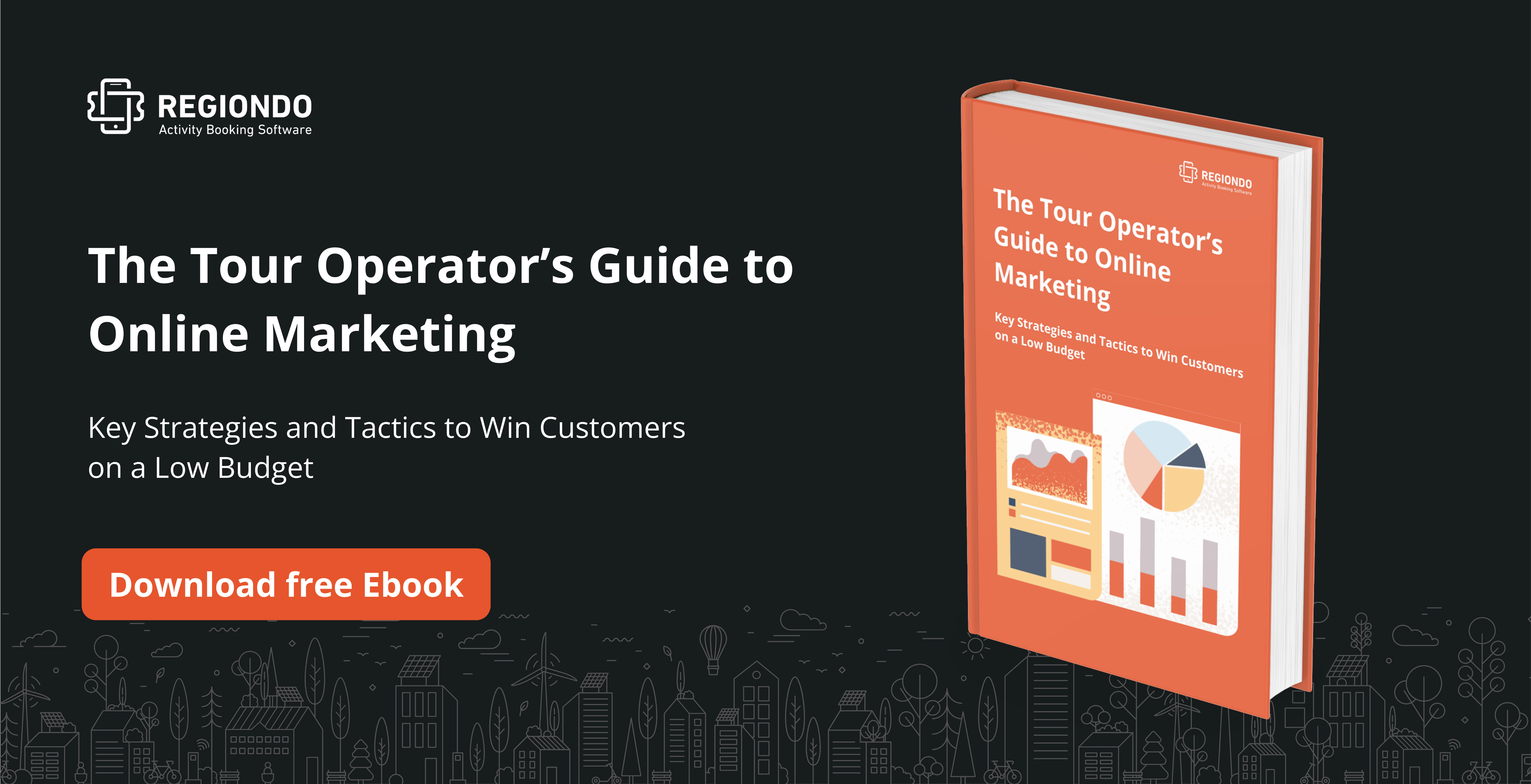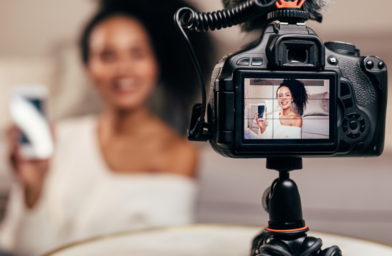Although it takes a little more time to see results, content marketing remains one of the most effective marketing tools for tours and activities. Just like a snowball rolling down a mountainside, content marketing just gets bigger and gains more momentum the further it goes. And one of the most effective content marketing strategies now is video marketing.
The demand for videos is growing daily. In fact, 53% of people want more video content from marketers, and over half (51.9%) of marketing professionals across the globe say video is the content with the best ROI. Video works so well that adding one to a landing page can increase conversions by 80%. In addition, your chances of showing up first in Google rankings are 53 times greater if you have embedded videos on a site page. After all, Google now owns YouTube, and thus the ranking impact of video has significantly increased. Predictions from experts show that by 2020, 80% “of all Internet traffic will be driven by video.
In short, video marketing works – but there are some key elements we have to talk about. It is worth it!
Understand Video Marketing
Video is now the primary medium by which content is shared. And the main reason is the explosion in ownership and use of mobile devices. As a result, video is the way a large share of people shop for goods and services online, and video consumption is growing at a rate of 100% per year. This means that whatever you do in your video marketing efforts, it should definitely be mobile friendly.
The human brain, in some estimations, can process video approximately 60,000 times faster than it can process written text. Therefore, video helps people make decisions quicker and more easily – ideal for creating a more pleasant experience and improving customer retention.
Video marketing as a species of content marketing is not related to sales (at least not directly). Video content, even more so than written content, is all about the story. Sure, you should provide useful, relevant information and move the content consumer toward a sign-up or sale, but your primary purpose is to tell a story that provides a pleasant experience. And while telling that story, you’re also trying to:
- Inspire viewers to experience something new
- Assist them in selecting a destination
- Help them choose the right offer for their level of experience
- Inform them about new tours and activities
- Increase positive reviews by heading off unrealistic expectations
The ultimate goal is to have your videos shared and re-shared on social media until one or more go viral. Video is the most effective kind of marketing, because, as we mentioned, it continues to gain momentum and can take on a life of its own.
Have a Plan
As with any kind of marketing, you need a planned strategy. And the first step in that plan is understanding that a video is not intended to be a commercial and your video marketing isn’t a promotional platform primarily. Rather, your videos should be an “experience” that people enjoy while watching and want to share. The next step is to fully understand your target audience and what makes them share and, ultimately, buy. Then you have to create video content that viewers want and need and will appreciate.
Again, as with any kind of marketing, you need to deploy a sales funnel that gradually and inexorably moves potential customers from the broad mouth of the funnel down to and eventually out of the narrow end where a sale occurs. So, then, because a video marketing campaign requires a series of videos, you should make several at a time so that each one builds on the previous one.
When you plan these videos, keep in mind, too, that the first 10 seconds of each video are the most critical. It’s during those initial seconds when a viewer will decide to watch the whole video or click away. So get right to the point and get the essential information right upfront. And then don’t neglect to include a call to action in them so that the viewer feels compelled to take the desired action.
Different types of videos
You know you have to produce video content that gets shared and remembered and moves viewers to the next step. But what kind of videos, exactly, do that?
Experience Videos
As one of the most powerful of all marketing videos, experience videos involve filming of the actual event or tour and present that experience to viewers. You can show viewers what they will actually see and experience on your tour. This kind of video gives viewers a good glimpse of what they will get, builds anticipation, and motivates them to take action.
Product Videos
These videos treat a particular tour, an aspect of a tour, or event/activity. They are a bit more information-based and explain what viewers will experience and other pertinent information about destinations and events/activities. Product videos also give you an opportunity to showcase your resources and explain how easy it is to book with your company. Product videos work with less action compared to experience videos. They should serve an explanatory purpose.
Testimonial Videos
We all want the assurance of social proof, and that’s why testimonial videos are so effective. In this kind of video, you simply have satisfied customers talk about their experience and what it meant to them. The goal is to make the video compelling by capturing genuine emotions and reactions. This kind of video often works best coming right on the heels of an experience video.
Besides your testimonial videos, TripAdvisor could serve as your best friend if it comes to customer reviews. Regiondo helps you to collect reviews automatically in order to promote your business!
Many marketers also try to combine these different types of videos. Make sure to mix it up in a sense that it won’t confuse your viewers but give an insight into what you have on offer.
Distribution channels
Once you have a series of carefully planned-out videos ready to go, what do you do with them? You put them everywhere you can, but some places give you a lot more bang for your effort.
YouTube
YouTube may not be as new and exciting as it once was, but it still works. It gets over a billion unique visitors every month and three in five travelers who watch online videos use it to narrow down their brand, destination, or activity choices.
The most recent Facebook changes have caused it to lose a good bit of its marketing effectiveness, but Instagram is heating up and growing more popular for marketing by the day. The only drawback with Instagram is that you have a limited amount of time to capture viewers’ attention, so you have to provide something arresting, snappy, or intriguing.
Marketing Newsletter
You do capture information and send out email newsletters, don’t you? It’s a struggle to keep coming up with fresh, useful content for them. But your marketing videos can fix that while getting wide distribution at the same time
So. Video marketing for activity providers in the travel and leisure industry can provide the greatest ROI of any other kind of marketing. That’s why a growing number of tourism companies are investing heavily in video. Simply put it has greater emotional impact, provides a better experience, and makes viewers want to take the next step. And when they are ready to take that next step, Regiondo has the booking software to make your life a whole lot easier.
Conclusion
This was a quick look at the keys to effective video marketing for tours and activities. We hope there was at least one valuable tip that you’ll be able to utilize and grow your business using the power of video!
You might also like:
- How to Use Images Effectively to Sell More Tours and Activities
- An Introduction to SEO for Tours and Activities
- A Simple Guide to Google Analytics for Tours & Activities
- 7 Email Marketing Tips to Grow Your Tour and Activity Business




